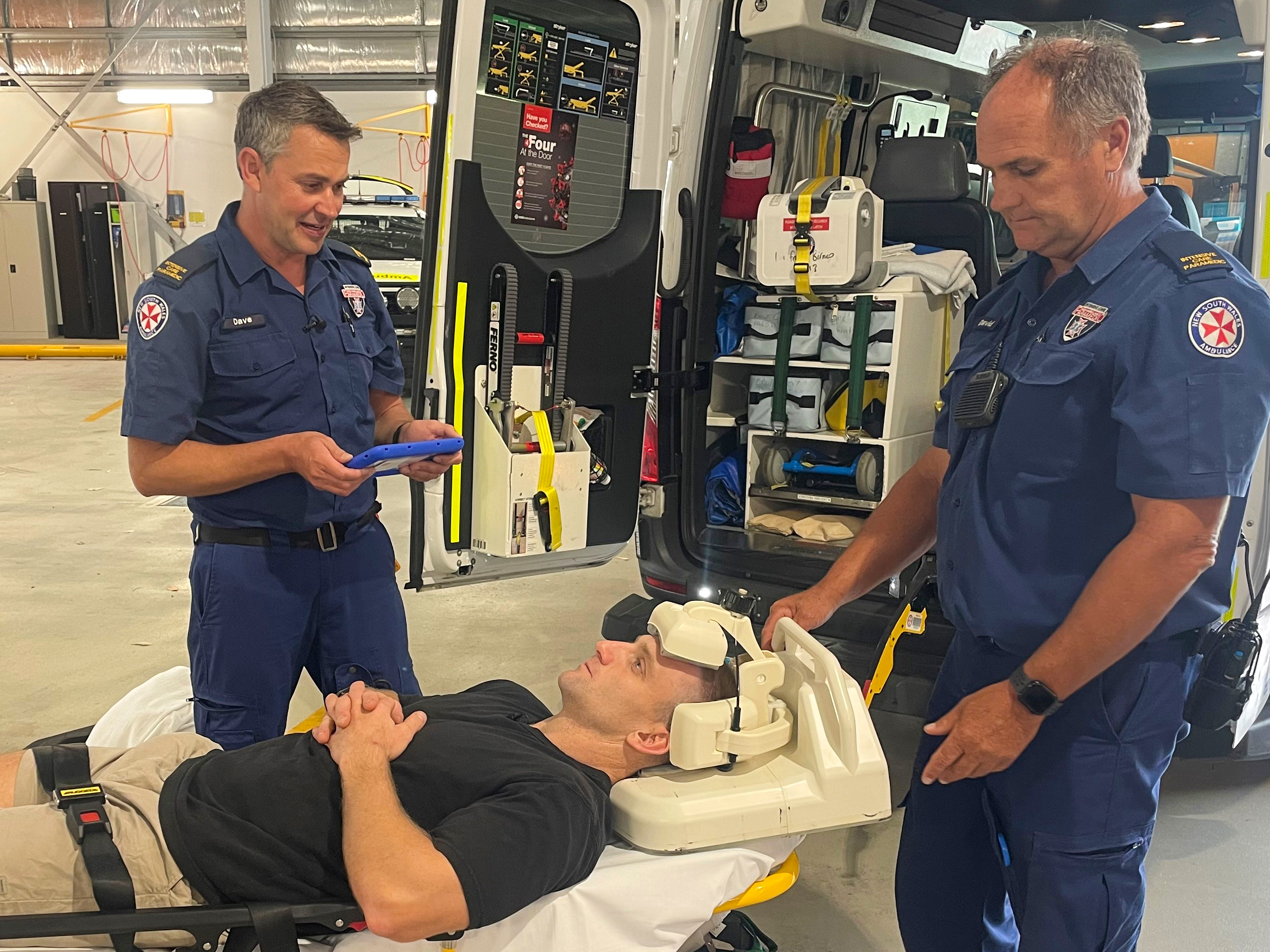A world-first collaborative trial will see cutting-edge technology used by NSW Ambulance as part of the rapid assessment and triage of stroke patients as they are transported to hospital.
A revolutionary new brain scanner, the Medfield Diagnostics Strokefinder MD100 helmet, is currently being piloted by NSW Ambulance paramedics in the Hunter region, the first time the Strokefinder helmet technology is being utilised on the frontline and outside of hospital.
Minister for Regional Health Ryan Park said this innovative trial could enable even faster stroke diagnosis and treatment, meaning more patients stand to benefit from timely stroke interventions in the vital ‘golden hour’.
“Stroke is a time critical emergency and is one of Australia’s biggest killers, so the earlier our paramedics and neurologists can assess and treat patients, the better the outcome,” Mr Park said.
“I am really proud our NSW Ambulance paramedics are the first in the world to use this device in the pre-hospital setting.
“This is a wonderful example of some of the truly collaborative projects taking place across the health system right now, where cutting-edge technology and our highly skilled hospital clinicians and frontline paramedics work together.”
NSW Ambulance Commissioner Dr Dominic Morgan said the technology is fast to operate and performs multiple brain measurements in 60 seconds.
“This exciting study brings together NSW Ambulance intensive care paramedics and John Hunter Hospital neurologists, and the Hunter Medical Research Institute, to evaluate the feasibility of the Strokefinder MD100 helmet in pre-hospital care,” Dr Morgan said.
“When combined with an innovative telehealth app, our paramedics on the ground are able to consult with the neurology team in the hospital to optimise the care and overall outcome for the stroke patient.”
Acute Stroke Services Neurologist at John Hunter Hospital and study lead, neurologist Professor Chris Levi, said clinicians and researchers will work together closely to evaluate and refine how the stroke detection system and telehealth app can optimise frontline care.
“When a stroke occurs, rapid and accurate diagnosis is vital to speed up the delivery of treatment interventions and improve clinical outcomes for the patient,” Professor Levi said.
Preliminary data from the trial shows almost all patients were scanned within an hour of the Triple Zero call being made.
Minister for Medical Research David Harris said these results of the trial have been remarkable considering less than five per cent of stroke patients in Australia undergo a hospital CT scan within an hour of suffering a stroke.
“Although still in the research phase, this innovation allows paramedics to rapidly scan the brain, hopefully within what’s known as the ‘golden hour’ after a stroke occurs which is when we can optimise treatment outcomes for the patient,” Mr Harris said.
Jack Di Tommaso, a 27-year-old gym owner and personal trainer from Newcastle, recently completed a marathon when an ischaemic stroke gave him and his family the shock of their lives. Jack didn’t know what to make of his sudden symptoms, which included slurred speech and reduced consciousness.
Thanks to this trial, the Strokefinder MD100 scan was performed on Jack within the ‘golden hour’ after suffering a stroke and his clinical information was captured in the telehealth app.
Jack said he felt lucky to be treated so quickly thanks in part to this ground-breaking trial.
“I’m grateful my mate called Triple Zero straight away, the paramedics arrived minutes later and were amazing from start to finish,” Jack said.
“I was scanned by the Strokefinder helmet and examined on a video call direct to the neurologist at hospital This collaboration and quick response was a major factor in making a full recovery.”
Minister for the Hunter Yasmin Catley said regional Australians are 17 percent more likely to suffer a stroke than those in metropolitan areas.
"In the Hunter New England Health District, around 1,500 residents experience a stroke each year, so it makes sense a trial like this would take place here,” Ms Catley said.
Member for Wallsend Sonia Hornery said she was proud clinicians from John Hunter Hospital are involved in the trial.
“Some of our best and brightest work at John Hunter Hospital, and for them to be involved this frontline research which is improving outcomes for people suffering a stroke is really fantastic,” Ms Hornery said.
NSW Ambulance in partnership with Hunter New England Local Health District, Medfield Diagnostics, Hunter Medical Research Institute, and Titan Neuroscience Research Australia, anticipate reporting trial results later this year.

